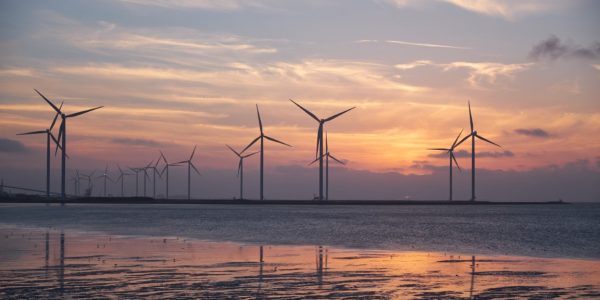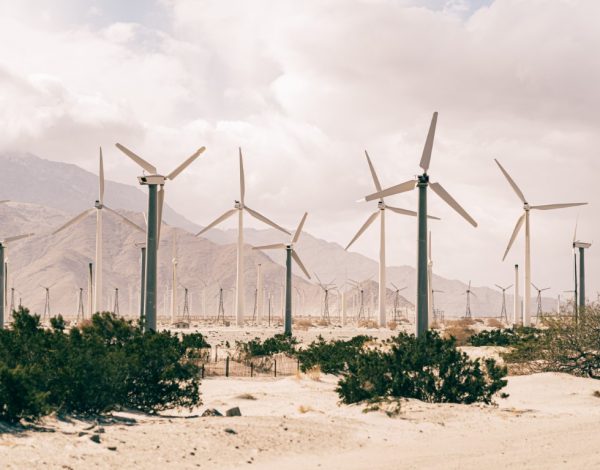Wind Energy
Wind Energy is a free, renewable resource, so no matter how much is used today, there will still be the same supply in the future. Wind energy is also a source of clean, non-polluting, electricity. Unlike conventional power plants, wind plants emit no air pollutants or greenhouse gases.
Wind turbines convert the kinetic energy in the wind into mechanical power. This mechanical power can be used for specific tasks (such as grinding grain or pumping water) or a generator can convert this mechanical power into electricity to power homes, businesses, schools, and the like.
YOU CAN USE A SINGLE SMALLER WIND TURBINE TO POWER A HOME (300 WATT TO 1 KW). COMMERCIAL TURBINES USUALLY PRODUCE ABOUT 50 TO 300 KILOWATTS OF ELECTRICITY EACH.
As of 1999, there were 11,368 wind turbines in California. These turbines are grouped together in three wind “farms.” Together these three “farms” make enough electricity to supply an entire city the size of San Francisco! About 11 percent of the entire world’s wind-generated electricity is found in California. Other countries that use a lot of wind energy are Denmark and Germany.


Modern wind turbines fall into two basic groups;
-
The horizontal-axis variety, like the traditional farm windmills used for pumping water, and
-
The vertical-axis design. Most large modern wind turbines are horizontal-axis turbines.
Now, there are near silent wind turbines that are designed specifically for city rooftop use! They rotate on vertical axis, optimizing wind capture, even as the air stream shifts within the dynamic city landscape. They take up just 40 square feet to generate ONE kilowatt, to get that much juice from a solar array, you would need up to 400 square feet, which is a tough sell in major cities
Even though the cost of wind power has decreased dramatically in the past 10 years, the technology requires a higher initial investment than fossil-fueled generators.However, wind energy costs much less when compared with energy generated from fossil-fuel, because there is no fuel to purchase and minimal operating expenses.
The major challenge to using wind as a source of power is that it is intermittent and does not always blow when electricity is needed. Further, good wind sites are often located in remote locations far from areas of electric power demand (such as cities). Finally, wind resource development may compete with other uses for the land, and those alternative uses may be more highly valued than electricity generation.
FES, through its partners, can Design, Build, Finance, Operate, Manage and Maintain Solar Farms at any capacity. We can execute EPC, BOT, BOO projects. We accept PPA contracts.
Hybrid Energy Systems
(Solar / Wind)
Solar Systems are photovoltaic cells that convert photons streaming from the Sun into electricity. Wind Turbines convert the kinetic energy in the wind into mechanical power. You can use a single smaller wind turbine to power a home or a school.
Hybrid Power Systems are power systems utilizing both Solar and Wind Technologies. By combining the two technologies together, most of the downside reasons cited against using one of these technologies alone will be eliminated. Hybrid Power Systems can generate almost continuous Free, Clean and Renewable Energy.
-
Free because they are naturally available.
-
Clean, because they emit no air pollutants or greenhouse gases.
-
Renewable, because no matter how much is used today, there will still be the same supply in the future.
-
Almost continuous, because between solar and wind, there is some energy generated day and night.
Small Hybrid Energy Systems have shown great success in supplying dependable energy in remote areas and third world countries were lack of energy supply is a major obstacle in implementing sound development plans.